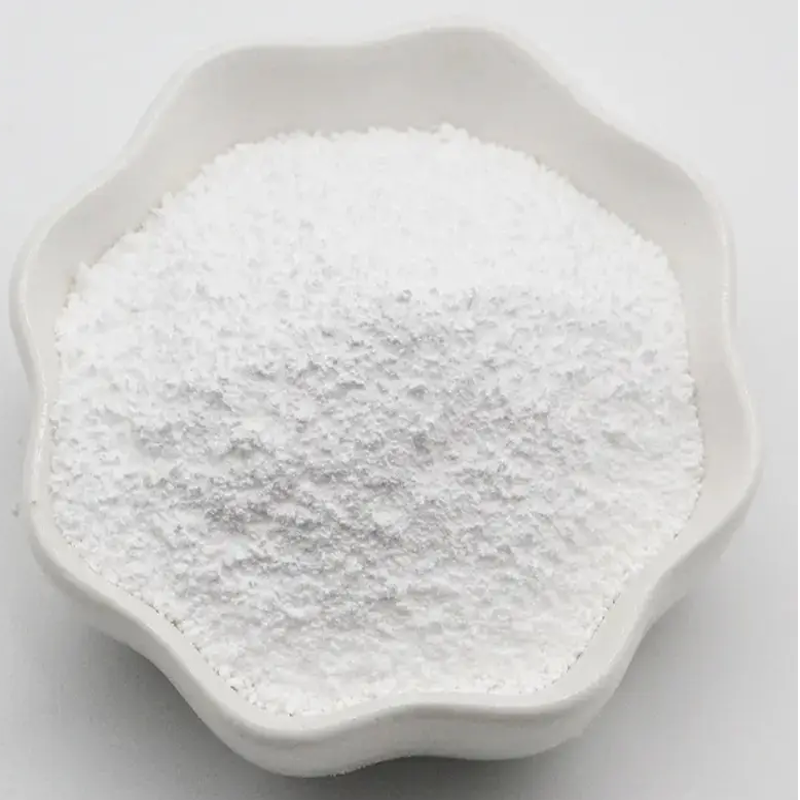-
Categories
-
Pharmaceutical Intermediates
-
Active Pharmaceutical Ingredients
-
Food Additives
- Industrial Coatings
- Agrochemicals
- Dyes and Pigments
- Surfactant
- Flavors and Fragrances
- Chemical Reagents
- Catalyst and Auxiliary
- Natural Products
- Inorganic Chemistry
-
Organic Chemistry
-
Biochemical Engineering
- Analytical Chemistry
- Cosmetic Ingredient
-
Pharmaceutical Intermediates
Promotion
ECHEMI Mall
Wholesale
Weekly Price
Exhibition
News
-
Trade Service
*Only for medical professionals to read, reference and suggest collections.
Before starting the inventory, let my friends review the classification of microorganisms together: 01 penicillin penicillins can be divided into: narrow-band penicillin, penicillin-resistant penicillin, enterobacteria-resistant broad-spectrum penicillin, and Pseudomonas aeruginosa broad-spectrum penicillin.
Narrow-spectrum penicillin: penicillin G, procaine penicillin, benzathine penicillin, penicillin V, etc.
, mainly acting on penicillin of gram-positive bacteria.
Penicillin-resistant penicillin: oxacillin, cloxacillin, flucloxacillin, etc.
, the antibacterial spectrum is similar to narrow-band penicillin, but the antibacterial effect is poor, and it is sensitive to Staphylococcus that is resistant to penicillin due to enzyme production, but methicillin Drug-resistant staphylococci are resistant to this class of drugs.
Antibacterial broad-spectrum penicillins: ampicillin, amoxicillin, etc.
, have antibacterial activity against some enterobacteriaceae bacteria.
Anti-Pseudomonas aeruginosa broad-spectrum penicillin: piperacillin, azlocillin, mezlocillin, ticarcillin, etc.
It has antibacterial activity against most gram-negative bacilli including Pseudomonas aeruginosa.
02 Cephalosporins The first-generation cephalosporins: mainly act on aerobic gram-positive cocci, and only have certain antibacterial activity against a few gram-negative bacilli; commonly used injections include ceftazolin, cefradine, etc.
, oral preparations include cefradine, Cephalexin and Cefadroxil, etc.
The second-generation cephalosporin: the activity against gram-positive cocci is similar to or slightly worse than that of the first-generation, and it also has antibacterial activity against some gram-negative bacilli; injections include cefuroxime, cefotiam, etc.
, and oral preparations include cefix Luo, cefuroxime axetil and cefprozil, etc.
Cephalosporins: cefoxitin, cefmetazole, cefminox, etc.
, the antibacterial spectrum and antibacterial effect are similar to the second-generation cephalosporins, but the antibacterial effect on anaerobic bacteria such as Bacteroides fragilis is stronger than that of cephalosporins. The third-generation cephalosporins: It has strong antibacterial effect against Gram-negative bacilli such as Enterobacteriaceae.
Ceftazidime and cefoperazone also have strong antibacterial activity against Pseudomonas aeruginosa; injection varieties include cefotaxime and ceftriaxone , Ceftazidime, cefoperazone, etc.
, oral varieties include cefixime and cefpodoxime proxetil, etc.
, oral varieties have no effect on Pseudomonas aeruginosa.
The fourth-generation cephalosporin: Cefepime is commonly used, which has roughly the same effect on Enterobacteriaceae as the third-generation cephalosporin.
It has similar effects on Pseudomonas aeruginosa and ceftazidime, and has a better effect on Gram-positive cocci.
The third-generation cephalosporins are slightly stronger.
03 Carbapenems Carbapenems have strong antibacterial activity against various gram-positive cocci, gram-negative bacilli (including Pseudomonas aeruginosa, Acinetobacter spp) and most anaerobic bacteria, and are against most β- Lactamases are highly stable, but have poor antibacterial effects on methicillin-resistant Staphylococcus and Streptomonas maltophilia.
04 The existing variety of monocyclic β-lactams is aztreonam.
It has good antibacterial activity against aerobic gram-negative bacteria such as Enterobacteriaceae and Pseudomonas aeruginosa, but has no antibacterial activity against aerobic gram-positive bacteria and anaerobic bacteria.
Such drugs have low nephrotoxicity.
05 Aminoglycoside streptomycin and kanamycin: It has good antibacterial effect on Enterobacteriaceae and Staphylococcus bacteria, but has no effect on Pseudomonas aeruginosa.
Gentamicin, tobramycin, netilmicin, amikacin, isepamicin, micronomicin, etimicin: Gram-negative to Enterobacteriaceae and Pseudomonas aeruginosa Bacillus has strong antibacterial activity and also has a good effect on Staphylococcus.
06 Pinglincosamides lincomycin and clindamycin have good antibacterial activity against gram-positive bacteria and anaerobic bacteria.
At present, bacteria such as Streptococcus pneumoniae are highly resistant to them.
07 Glycopeptide vancomycin, norvancomycin and teicoplanin: all glycopeptide antibacterial drugs are active against gram-positive bacteria, including methicillin-resistant Staphylococcus, Enterococcus, Listeria Bacteria, Streptococcus, Clostridium, etc.
08 Fluoroquinolone Levofloxacin, Moxifloxacin: Strong effect on intracellular pathogens or anaerobic bacteria such as Streptococcus pneumoniae, Group A hemolytic streptococcus, Chlamydia, Mycoplasma, Legionella and other intracellular pathogens.
Ciprofloxacin, Levofloxacin: Mainly applicable to lower respiratory tract infections caused by Klebsiella pneumoniae, Enterobacter spp, Pseudomonas spp.
and other gram-negative bacilli.
09 Macrolides Macrolides: have antibacterial activity against gram-positive bacteria, anaerobic bacteria, mycoplasma and chlamydia.
The new macrolides azithromycin, clarithromycin and roxithromycin have enhanced antimicrobial activity against Haemophilus influenzae, Mycoplasma pneumoniae or Chlamydia pneumoniae.
10 Tetracyclines tetracycline, chlortetracycline, doxycycline, metacycline and minocycline: have broad-spectrum antibacterial activity, against Staphylococcus, Streptococcus, Enterobacteriaceae (Escherichia coli, Cree Primorella), Acinetobacter, Stenotrophomonas maltophilia, etc.
have antibacterial activity, and have good antibacterial activity against Brucella.
11 Nitroimidazoles Nitroimidazoles include metronidazole, tinidazole and ornidazole, etc.
, and have high antibacterial activity against anaerobic bacteria such as Bacteroides, Fusobacterium, Prevotella, and Clostridium It also has good activity against protozoa such as Trichomonas, Amoeba and Giardia lamblia.
Before starting the inventory, let my friends review the classification of microorganisms together: 01 penicillin penicillins can be divided into: narrow-band penicillin, penicillin-resistant penicillin, enterobacteria-resistant broad-spectrum penicillin, and Pseudomonas aeruginosa broad-spectrum penicillin.
Narrow-spectrum penicillin: penicillin G, procaine penicillin, benzathine penicillin, penicillin V, etc.
, mainly acting on penicillin of gram-positive bacteria.
Penicillin-resistant penicillin: oxacillin, cloxacillin, flucloxacillin, etc.
, the antibacterial spectrum is similar to narrow-band penicillin, but the antibacterial effect is poor, and it is sensitive to Staphylococcus that is resistant to penicillin due to enzyme production, but methicillin Drug-resistant staphylococci are resistant to this class of drugs.
Antibacterial broad-spectrum penicillins: ampicillin, amoxicillin, etc.
, have antibacterial activity against some enterobacteriaceae bacteria.
Anti-Pseudomonas aeruginosa broad-spectrum penicillin: piperacillin, azlocillin, mezlocillin, ticarcillin, etc.
It has antibacterial activity against most gram-negative bacilli including Pseudomonas aeruginosa.
02 Cephalosporins The first-generation cephalosporins: mainly act on aerobic gram-positive cocci, and only have certain antibacterial activity against a few gram-negative bacilli; commonly used injections include ceftazolin, cefradine, etc.
, oral preparations include cefradine, Cephalexin and Cefadroxil, etc.
The second-generation cephalosporin: the activity against gram-positive cocci is similar to or slightly worse than that of the first-generation, and it also has antibacterial activity against some gram-negative bacilli; injections include cefuroxime, cefotiam, etc.
, and oral preparations include cefix Luo, cefuroxime axetil and cefprozil, etc.
Cephalosporins: cefoxitin, cefmetazole, cefminox, etc.
, the antibacterial spectrum and antibacterial effect are similar to the second-generation cephalosporins, but the antibacterial effect on anaerobic bacteria such as Bacteroides fragilis is stronger than that of cephalosporins. The third-generation cephalosporins: It has strong antibacterial effect against Gram-negative bacilli such as Enterobacteriaceae.
Ceftazidime and cefoperazone also have strong antibacterial activity against Pseudomonas aeruginosa; injection varieties include cefotaxime and ceftriaxone , Ceftazidime, cefoperazone, etc.
, oral varieties include cefixime and cefpodoxime proxetil, etc.
, oral varieties have no effect on Pseudomonas aeruginosa.
The fourth-generation cephalosporin: Cefepime is commonly used, which has roughly the same effect on Enterobacteriaceae as the third-generation cephalosporin.
It has similar effects on Pseudomonas aeruginosa and ceftazidime, and has a better effect on Gram-positive cocci.
The third-generation cephalosporins are slightly stronger.
03 Carbapenems Carbapenems have strong antibacterial activity against various gram-positive cocci, gram-negative bacilli (including Pseudomonas aeruginosa, Acinetobacter spp) and most anaerobic bacteria, and are against most β- Lactamases are highly stable, but have poor antibacterial effects on methicillin-resistant Staphylococcus and Streptomonas maltophilia.
04 The existing variety of monocyclic β-lactams is aztreonam.
It has good antibacterial activity against aerobic gram-negative bacteria such as Enterobacteriaceae and Pseudomonas aeruginosa, but has no antibacterial activity against aerobic gram-positive bacteria and anaerobic bacteria.
Such drugs have low nephrotoxicity.
05 Aminoglycoside streptomycin and kanamycin: It has good antibacterial effect on Enterobacteriaceae and Staphylococcus bacteria, but has no effect on Pseudomonas aeruginosa.
Gentamicin, tobramycin, netilmicin, amikacin, isepamicin, micronomicin, etimicin: Gram-negative to Enterobacteriaceae and Pseudomonas aeruginosa Bacillus has strong antibacterial activity and also has a good effect on Staphylococcus.
06 Pinglincosamides lincomycin and clindamycin have good antibacterial activity against gram-positive bacteria and anaerobic bacteria.
At present, bacteria such as Streptococcus pneumoniae are highly resistant to them.
07 Glycopeptide vancomycin, norvancomycin and teicoplanin: all glycopeptide antibacterial drugs are active against gram-positive bacteria, including methicillin-resistant Staphylococcus, Enterococcus, Listeria Bacteria, Streptococcus, Clostridium, etc.
08 Fluoroquinolone Levofloxacin, Moxifloxacin: Strong effect on intracellular pathogens or anaerobic bacteria such as Streptococcus pneumoniae, Group A hemolytic streptococcus, Chlamydia, Mycoplasma, Legionella and other intracellular pathogens.
Ciprofloxacin, Levofloxacin: Mainly applicable to lower respiratory tract infections caused by Klebsiella pneumoniae, Enterobacter spp, Pseudomonas spp.
and other gram-negative bacilli.
09 Macrolides Macrolides: have antibacterial activity against gram-positive bacteria, anaerobic bacteria, mycoplasma and chlamydia.
The new macrolides azithromycin, clarithromycin and roxithromycin have enhanced antimicrobial activity against Haemophilus influenzae, Mycoplasma pneumoniae or Chlamydia pneumoniae.
10 Tetracyclines tetracycline, chlortetracycline, doxycycline, metacycline and minocycline: have broad-spectrum antibacterial activity, against Staphylococcus, Streptococcus, Enterobacteriaceae (Escherichia coli, Cree Primorella), Acinetobacter, Stenotrophomonas maltophilia, etc.
have antibacterial activity, and have good antibacterial activity against Brucella.
11 Nitroimidazoles Nitroimidazoles include metronidazole, tinidazole and ornidazole, etc.
, and have high antibacterial activity against anaerobic bacteria such as Bacteroides, Fusobacterium, Prevotella, and Clostridium It also has good activity against protozoa such as Trichomonas, Amoeba and Giardia lamblia.







